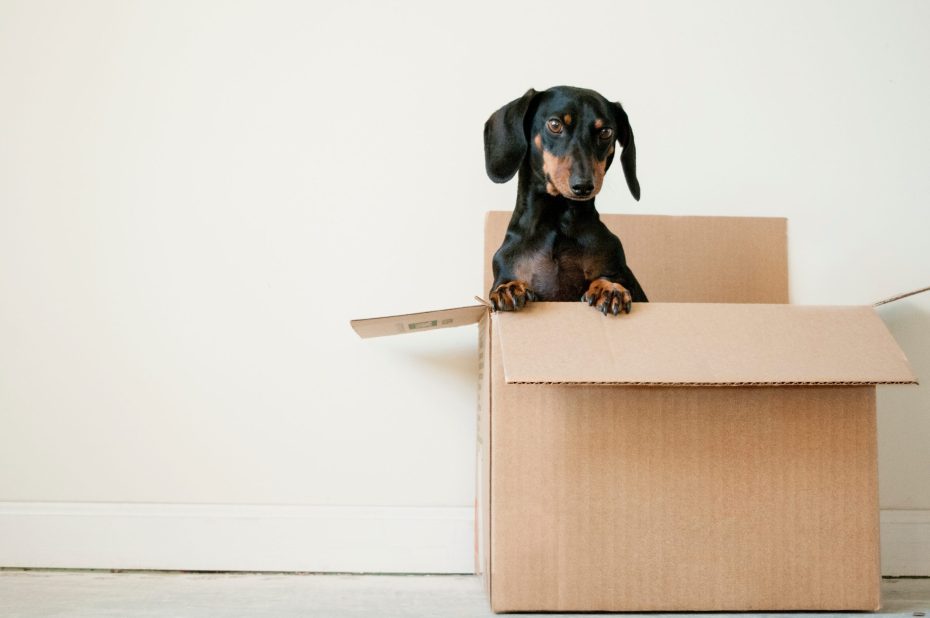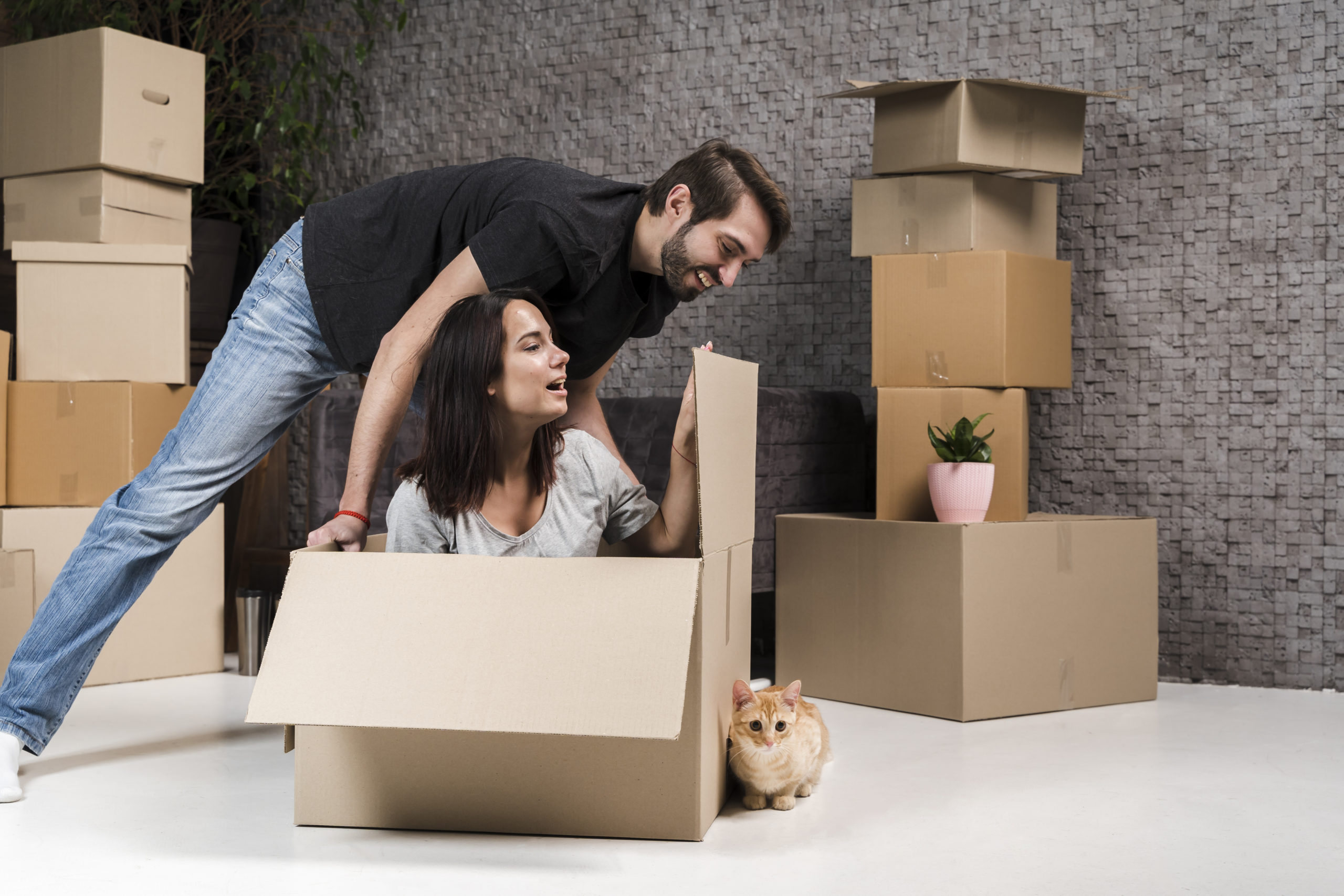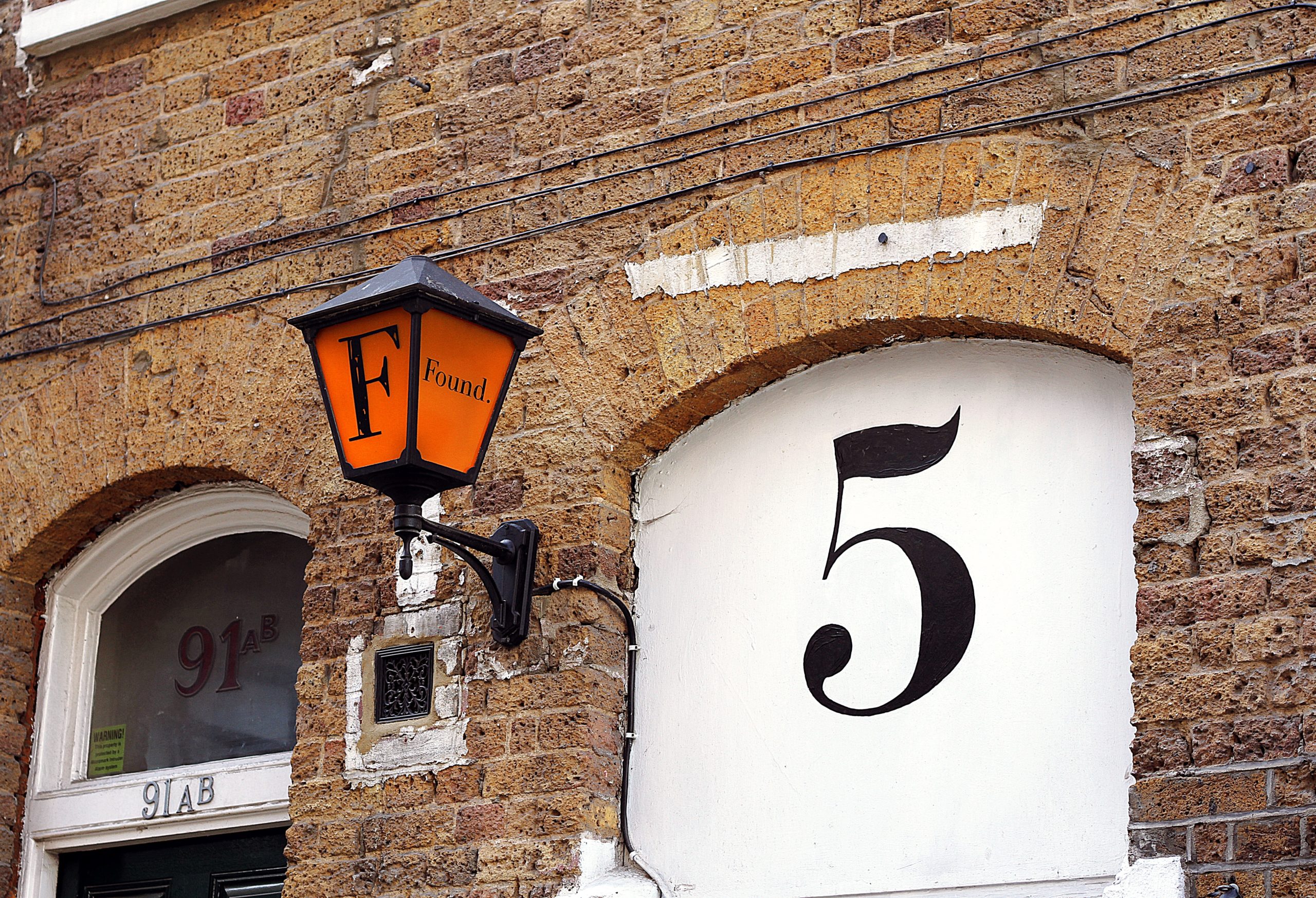Moving is a stressful event for everyone, and it is even more so when our pet is part of the adventure. PlanYourMove and Animalia offer you here several keys to spend this moment in the best possible way.
Before moving:
As when you prepare your suitcases before leaving on vacation and your dog is afraid of being forgotten, the preparations for the move are a source of stress and agitation for our animals: back and forth, packing boxes, moving furniture … In addition, cats are homeowners and have their little habits, their favorite places and do not like change. This is especially true if your pet is old, stressed, or has been abandoned in the past …
To avoid stress as much as possible, change your pet’s environment as little as possible. Move his basket, his toys, his bowls but also the places where he likes to rest like his chair at the last moment only. Also try to behave consistently with him, do not reassure him more than usual but deal with it in the same way as in normal times.
If other animals are already living in the new accommodation, a prior meeting is preferable because a new companion would be an additional stress for your animal to manage. If this is not possible, you can also present linens with the respective scents of the different animals.
If you have a dog, if possible you can bring him there and have him walk in the new accommodation but also in the neighborhood so that he can already get some bearings.
Moving day:
The best option for moving day is to have your dog or cat looked after by someone your pet is used to. If this option is not possible, it is better to put your companion in a quiet room with his toys, rugs, bowls before leaving but also when arriving. He can then leave this room and explore his new environment little by little.
For transport, the ideal remains the transport crate because it is secure and reassuring for the animal, as long as it is used to it. Remember to put your toy there as well as a towel at the bottom to absorb any urination / defecation. Also take regular breaks (every 2 hours for example) if the trip is long to allow him to defecate and drink. Beware of heat waves depending on the temperature: our dogs and cats cannot cool themselves as efficiently as us.
We must also think about managing the potential motion sickness, especially among young people. To limit it, you can arrange the body so that visibility is reduced. There are also different types of treatment: homeopathy, Bach flowers, anti-stress or stronger drugs that “put the animal to sleep”: discuss this with your veterinarian.
After the move
Organize your pet’s new home in a peaceful environment, with its usual basket, toys, bowls and litter box. While this may look like the organization of the old home, it is even better because your animal will take its bearings faster … Your dog or cat’s adaptation to their new home can take several days to weeks.
Finally, do not let your cat out until he has adapted well to his new environment: the risk of him running away is even greater in the first few days, especially if your new home is very close to the old one. You will be able to make the first outings with your cat in order to accustom him more quickly to his new outside environment. If you have a balcony, make sure that no falls are possible. There are nets or small fences that prevent animals from falling during risky exploration.
Advice from PlanYourMove, your free moving assistant:
- In the event of renting, find out about the terms and possibilities of keeping certain animals in your new home from your landlord.
- Take the opportunity to gather all the documents in the same place (vaccination record, training, certificate of ownership, etc.) and think about the advantages of having your animal insured with our partner Animalia to avoid all uncertain future costs in the event of illness or accident. .
- Anticipate and find out about the vets available at the new home.
- Depending on the type of animal, do not forget to report the departure and arrival to the respective municipalities (see depending on which animal).
- And above all, don’t forget to change the contact details of your pet’s chip and / or collar.
This article is offered to you in partnership with Animalia, the number 1 in dog and cat insurance in Switzerland. Animalia offers you convenient services so that all you have to do is love her.



